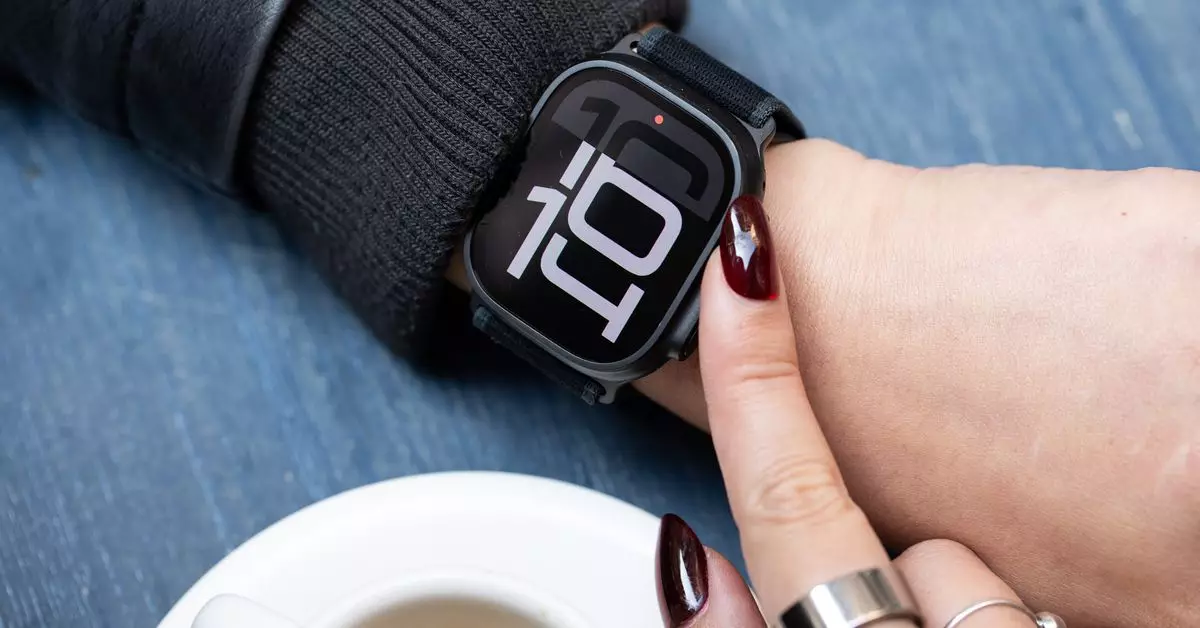In the realm of technology, where every new release promises groundbreaking features and capabilities, sometimes it’s not the functionality but the aesthetics that drive consumers toward a purchase. The recently launched black Apple Watch Ultra 2 seems to embody this concept perfectly. Priced at a striking $800, the watch offers nothing significantly different from its predecessors, save for its sleek black finish. However, the emotional and aesthetic appeal it presents cannot be understated, triggering a cascade of desires in many tech enthusiasts.
An often-overlooked factor in consumer behavior is the psychology of color. The black variant of the Ultra 2 draws immediate attention, effortlessly elevating the wearer’s profile. While a rational mind might dismiss this version as a simple recolor, there’s a transformative power in aesthetics. Donning this watch, one might feel like a modern-day knight or an enigmatic figure commanding respect. In contrast, the traditional Ultra 2, despite its functional prowess, fails to evoke the same visceral excitement. This phenomenon raises a critical question: Why are we so easily enchanted by superficial alterations?
Interestingly, this allure of aesthetics extends beyond mere visual appeal. It embodies nostalgia, empowerment, and even a sense of identity. When adorned with this watch, one could feel a sense of confidence that transcends its actual technological capabilities. The wearer’s perceived status is amplified in the societal context of fashion and technology, proving that sometimes perceived value clashes with actual utility.
The Dilemma of Demand: Upgrading for a Color
In a world where consumerism often equates value with novelty, is it absurd to contemplate upgrading to a device that harbors no functional advancement? For many, the answer is yes; yet, there’s more to consider than simple logic. Why are we compelled to own the latest version, even if the differences are minuscule? This drives the heart of marketing, where companies understand that emotional engagement often outweighs rational decision-making.
The black Apple Watch Ultra 2 demonstrates this principle perfectly. Instead of being a tool, it becomes an extension of one’s personality—a badge of identity in a world searching for self-expression. It raises an essential observation regarding consumer behavior: that our purchases are not merely based on utility, but significantly influenced by emotional response and personal expression.
The Psychological Underpinnings of Choices
Delving deeper into this fascinating relationship between color, emotions, and consumer behavior reveals a complex psychological tapestry. The joy derived from possessing a gadget in a color that resonates with us reflects more than just surface pleasure; it touches upon aspects of human emotion, allowing individuals to connect their products with feelings of satisfaction, nostalgia, or aspiration.
When faced with choices, such as between the pink iPhone 16 or the deep purple iPhone 14 Pro Max, reactions can be overwhelmingly personal. That potent emotional trigger—one that can evoke happiness or frustration—illustrates the significant roles colors can play in shaping our preferences. Understanding these responses is paramount for marketers, who can manipulate these sentiments to cultivate a sense of connection—delighting consumers with every new release, even when the technological advancements are lacking.
Ultimately, the decision to purchase an aesthetic upgrade like the black Apple Watch Ultra 2 transcends mere logic; it melds personal satisfaction with emotional fulfillment. While it may seem frivolous on the surface, we must acknowledge that life often provides us scant opportunities to indulge in joys that feel genuinely personal. In a world dominated by practicality, opting for joy and self-expression through aesthetics is a compelling motivation that some may choose to embrace unreservedly.
The black Apple Watch Ultra 2, though lacking in groundbreaking features, offers a vivid experience—the culmination of powerful aesthetics and emotional resonance. As shoppers traverse the landscape of constant technological advancements, they might find themselves curbing their intellect in favor of delight, proving that even in the tech-savvy market, the heart often dictates choices. So, while one might argue against the purchase, it ultimately circles back to the simple truth: Sometimes, it’s perfectly okay to buy something merely because it makes you feel good.

